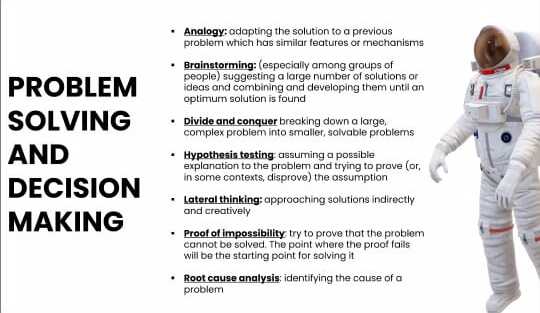Blog entry by MUHAMAD ABDULLAH KHRAYEEF
“Menghadapai Critical Life Skill”

A. Problem solving and dicision making
· Analogy : adapting the solution to a previous problem which has similar features or mechanisms
· Brainstorming : (especially among groups of people) suggesting a large number of solutions or ideas and combining and developing them until an optimum solution is found
· Divide and conquer : breaking down a large complex problem into smaller solvable problems
· Hypothesis testing : assuming a possible explanation to the problem and trying to prove (or, in some contexts, disprove) the assumption
· Lateral thinking : approaching solutions indirectly and creatively
Proof of impossibility : try to prove that the problem cannot be solved. The point where the proof fails will be the starting point for solving it
· Root cause analysis : identifying the cause of a problem
Lateral Thinking
What & when :
1. Tidak ada best practice, belum bisa solusinya atau terlalu complex
2. Tidak melulu linear thinking, kita bisa memanfaatkan problem
How :
1. Jika kita tidak bisa menghilangkannya, kita gunakan saja
2. Hal kreatif apa yang bisa kita lakukan terhadap problem itu
B. Creative thinking and critical thinking
Creative thinking => The ability to analyze available fact, evidence, observations, and arguments to form a judgement.
Critical thinking => The ability to look at things differently, and find new ways of solving problems, thinking out of the box.
C. Communication and interpersonal skills
Communications skills => The ability to pass receive and process information. They are the traits that allow you to make requests, ask questions, understand instructions, give direction and relay information with clarity and conciseness.
Interpesonal skills => The ability to handle conflict, teamwork, empathy, listening, and a positive attitude. Being flexible and positive, able to listen, and communicating well include verbal and nonverbal communication.
EXAMPLE :
· Friendliness and empathy
· Public speaking
· Reflection
· Written communication
· Confidence
· Clarity
· Responsiveness
· Etc.
D. Self-awareness and empathy
Self awareness => The ability to focus on yourself and how your actions thoughts or emotions do or don't align with your internal standards.
If you are highly self aware you can objectively evaluate yourself manage your emotions align your behavior with your values and understand correctly how others perceive you.
Empathy => The ability to understand how others are feeling and it absolutely critical to emotional intelligence.
Become more aware of the feelings and emotions to other people and in false responses to people based on this information.
Six ways to practice empathy in the classroom :
· Listen actively
· Withold judgement
· Be understanding
· Show emphatic body language
· Practice mindfulness
· Ask open-ended questions
